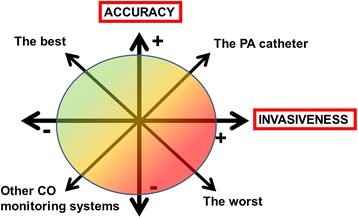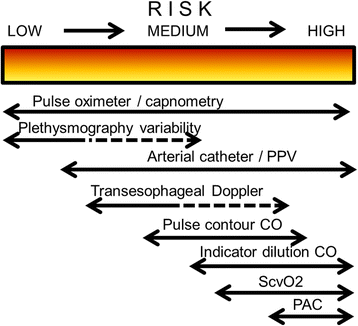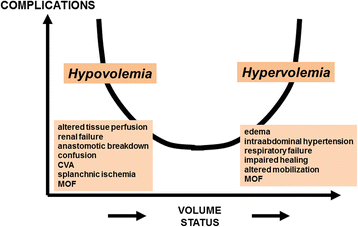Perioperative cardiovascular monitoring of high-risk patients: a consensus of 12
- PMID: 25953531
- PMCID: PMC4424585
- DOI: 10.1186/s13054-015-0932-7
Perioperative cardiovascular monitoring of high-risk patients: a consensus of 12
Abstract
A significant number of surgical patients are at risk of intra- or post-operative complications or both, which are associated with increased lengths of stay, costs, and mortality. Reducing these risks is important for the individual patient but also for health-care planners and managers. Insufficient tissue perfusion and cellular oxygenation due to hypovolemia, heart dysfunction or both is one of the leading causes of perioperative complications. Adequate perioperative management guided by effective and timely hemodynamic monitoring can help reduce the risk of complications and thus potentially improve outcomes. In this review, we describe the various available hemodynamic monitoring systems and how they can best be used to guide cardiovascular and fluid management in the perioperative period in high-risk surgical patients.
Figures



References
-
- Weiser TG, Regenbogen SE, Thompson KD, Haynes AB, Lipsitz SR, Berry WR, et al. An estimation of the global volume of surgery: a modelling strategy based on available data. Lancet. 2008;372:139–44. - PubMed
-
- Jhanji S, Thomas B, Ely A, Watson D, Hinds CJ, Pearse RM. Mortality and utilisation of critical care resources amongst high-risk surgical patients in a large NHS trust. Anaesthesia. 2008;63:695–700. - PubMed
Publication types
MeSH terms
Grants and funding
LinkOut - more resources
Full Text Sources
Other Literature Sources
Medical

